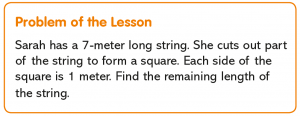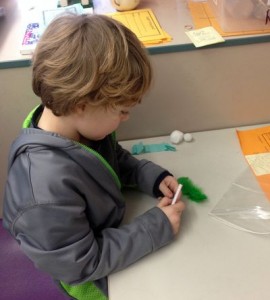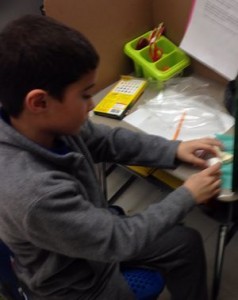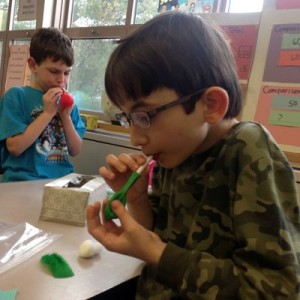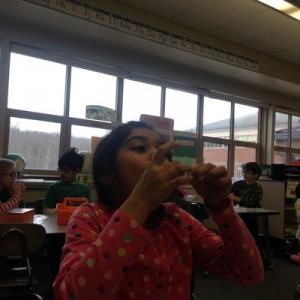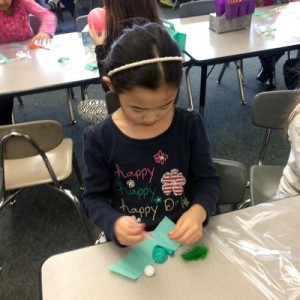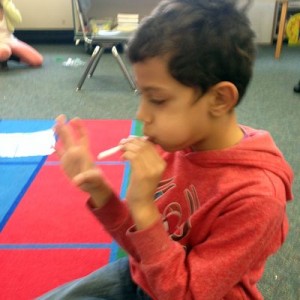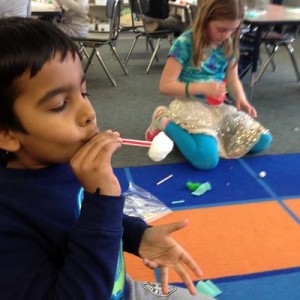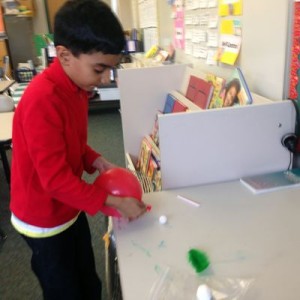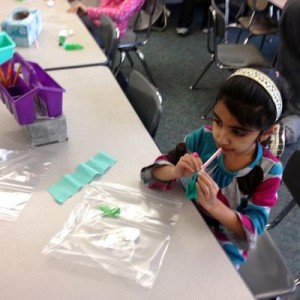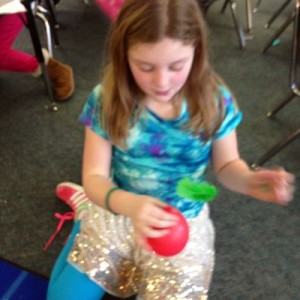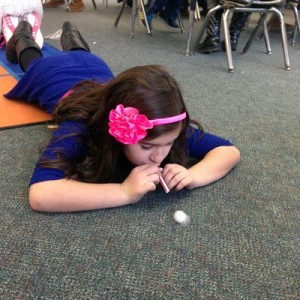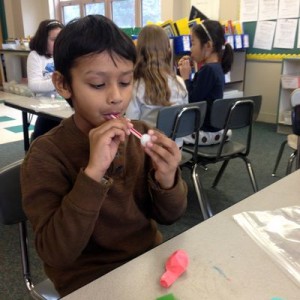Posted by kavery508 | Posted in Uncategorized | Posted on January 25, 2016
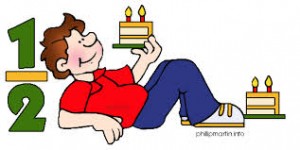 We’re halfway to the end of the year! This is a good time to reflect on our journey, and to thank you for your efforts as partners in your child’s education. It’s remarkable how much growth the kids have shown, from learning skills and critical thinking to their growth as caring members of our learning community. To foster self-reflection, try asking your child to compare how s/he is different now from the start of the year. What things can s/he do now that s/he couldn’t before? What things does s/he still want to learn (goals) and how can we get there? It’s also a good time to begin learning about division, fractions and the concept of 1/2 from the Leader in Learning’s Blog: http://leaderinlearning.wordpress.com/2011/10/19/how-to-teach-halving/ Scroll down for good ideas with larger numbers too (like 180!).
We’re halfway to the end of the year! This is a good time to reflect on our journey, and to thank you for your efforts as partners in your child’s education. It’s remarkable how much growth the kids have shown, from learning skills and critical thinking to their growth as caring members of our learning community. To foster self-reflection, try asking your child to compare how s/he is different now from the start of the year. What things can s/he do now that s/he couldn’t before? What things does s/he still want to learn (goals) and how can we get there? It’s also a good time to begin learning about division, fractions and the concept of 1/2 from the Leader in Learning’s Blog: http://leaderinlearning.wordpress.com/2011/10/19/how-to-teach-halving/ Scroll down for good ideas with larger numbers too (like 180!).
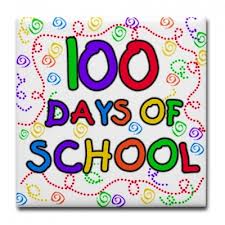 Of course, this means the 100th day of school is nearing (at this time, Feb. 10)! I will set up a “100 Day Museum” to show off student projects and learning. I encourage children to create a poster/collection/display/etc. that somehow represents 100. Instead of simply collecting 100 things in a bag, I’m challenging students to think more deeply about number. They could bring/show something that displays an understanding of number, patterns, and/or the math we’ve done so far, such as: grouping objects (stickers/pennies/etc.) on a poster that shows counting by 5s, 10s, 2s, etc., possibly with accompanying multiplication/repeated addition/division explanations; bar models using 100; create real-world problems with 100. There is also a plethora of projects and ideas on Pinterest and across the web!
Of course, this means the 100th day of school is nearing (at this time, Feb. 10)! I will set up a “100 Day Museum” to show off student projects and learning. I encourage children to create a poster/collection/display/etc. that somehow represents 100. Instead of simply collecting 100 things in a bag, I’m challenging students to think more deeply about number. They could bring/show something that displays an understanding of number, patterns, and/or the math we’ve done so far, such as: grouping objects (stickers/pennies/etc.) on a poster that shows counting by 5s, 10s, 2s, etc., possibly with accompanying multiplication/repeated addition/division explanations; bar models using 100; create real-world problems with 100. There is also a plethora of projects and ideas on Pinterest and across the web!
 Students have been doing a great job developing opinion writing pieces with evidence that supports their reasons. Last week’s assignment was to tell their opinions on the best way to spend free time. Check out this one from Teo on playing video games: One reason is…you can play video games on your table, iPad, and phone. You can play “Minecraft Jetpack Joyride” and “Fruit Ninja” for entertainment when you’re traveling. Here’s one from Sid on watching TV: Another reason is you learn. In certain episodes like National Geographic you learn about animals, endangered species, and more. And one more from Mariyah, on having a sleepover: One reason I think so is you get to stay up all night. You can watch movies and sneak snacks from the kitchen all night. Awesome!
Students have been doing a great job developing opinion writing pieces with evidence that supports their reasons. Last week’s assignment was to tell their opinions on the best way to spend free time. Check out this one from Teo on playing video games: One reason is…you can play video games on your table, iPad, and phone. You can play “Minecraft Jetpack Joyride” and “Fruit Ninja” for entertainment when you’re traveling. Here’s one from Sid on watching TV: Another reason is you learn. In certain episodes like National Geographic you learn about animals, endangered species, and more. And one more from Mariyah, on having a sleepover: One reason I think so is you get to stay up all night. You can watch movies and sneak snacks from the kitchen all night. Awesome!
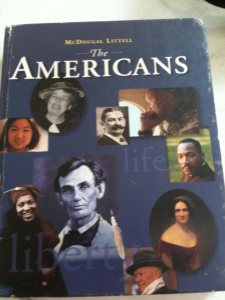 In a culminating assignment that combines writing objectives with critical thinking, asking questions while reading, technology, history, and research, students will be asked to choose a famous American to study. Media Specialist Christy Minton will be teaching students about resources available in our Media Center, the Shrewsbury Public Library, and online. She will show children, using sets of iPads, how to conduct a safe online search using Encyclopedia Britannica Kids and The Library of Congress (I recommend both for ‘anytime’ learning!). Kids will choose biographical figures and select information to print. They will also be given books and articles to supplement their choices. Over the next two weeks, they will be taught to read with questions in mind; flag important information; and use their research to write opinion writing pieces on what made famous Americans great. Smart!
In a culminating assignment that combines writing objectives with critical thinking, asking questions while reading, technology, history, and research, students will be asked to choose a famous American to study. Media Specialist Christy Minton will be teaching students about resources available in our Media Center, the Shrewsbury Public Library, and online. She will show children, using sets of iPads, how to conduct a safe online search using Encyclopedia Britannica Kids and The Library of Congress (I recommend both for ‘anytime’ learning!). Kids will choose biographical figures and select information to print. They will also be given books and articles to supplement their choices. Over the next two weeks, they will be taught to read with questions in mind; flag important information; and use their research to write opinion writing pieces on what made famous Americans great. Smart!
 This week we begin chapter 7 of Math in Focus, the goal of which is to make students proficient with linear measurement (especially meters and centimeters). To begin, students will learn the importance of standard units of measurement and be introduced to content-specific vocabulary (width; height; length; meter; etc.). They will next develop a sense of how big meters and centimeters are. Then they will learn correct methods for estimating and accurately measuring and talking about measurement (more than, less than, about, exactly). And as always, they will be asked to solve real-world problems that require analysis and application of skills learned. Consider the following problem from this week’s lessons. Notice how it requires students to think about space, length, multiplication/repeated addition, and subtraction to solve it:
This week we begin chapter 7 of Math in Focus, the goal of which is to make students proficient with linear measurement (especially meters and centimeters). To begin, students will learn the importance of standard units of measurement and be introduced to content-specific vocabulary (width; height; length; meter; etc.). They will next develop a sense of how big meters and centimeters are. Then they will learn correct methods for estimating and accurately measuring and talking about measurement (more than, less than, about, exactly). And as always, they will be asked to solve real-world problems that require analysis and application of skills learned. Consider the following problem from this week’s lessons. Notice how it requires students to think about space, length, multiplication/repeated addition, and subtraction to solve it:
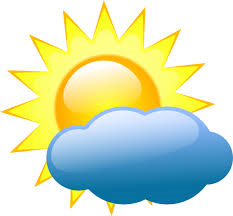 Having learned about weather types, the water cycle, cloud types, temperature, and the sun, the last piece of the weather puzzle is air. We began by investigating what air can do, and what we can do with air. The kids concluded: You can trap air; You can use air to move things; You can make wind with air; Air can warm things up; You can use air, including suction, to control the directions of objects; and You can control the direction of air. Notice how many of these understandings form the basis for both earth science and physical science? This is the foundation of energy creation, manipulation, and distribution!
Having learned about weather types, the water cycle, cloud types, temperature, and the sun, the last piece of the weather puzzle is air. We began by investigating what air can do, and what we can do with air. The kids concluded: You can trap air; You can use air to move things; You can make wind with air; Air can warm things up; You can use air, including suction, to control the directions of objects; and You can control the direction of air. Notice how many of these understandings form the basis for both earth science and physical science? This is the foundation of energy creation, manipulation, and distribution!

